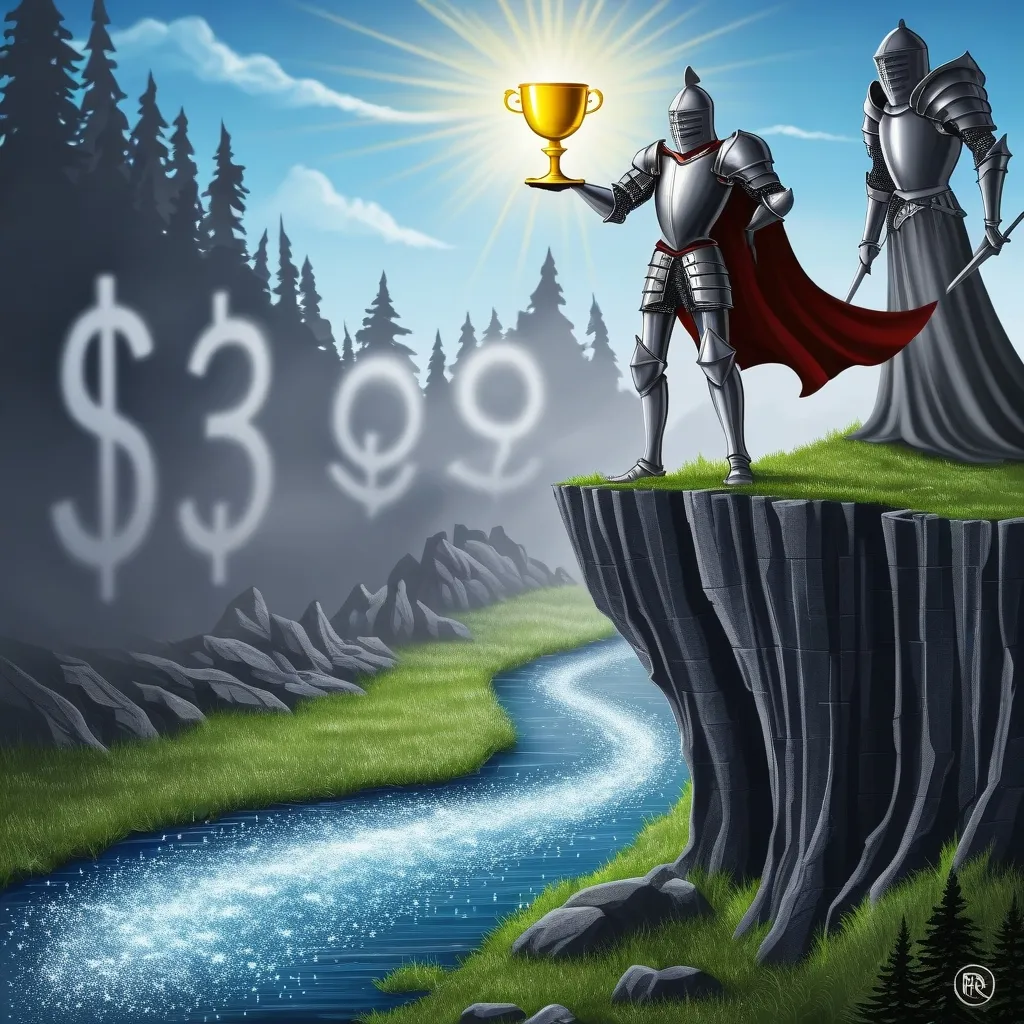Let’s talk about one of the essentials that often buzzes around the world of investing—it’s the Price-to-Earnings (P/E) ratio. It’s one of those things that can make a person feel either super savvy or completely lost in the maze of stock market jibber-jabber. If you’re aiming to figure out whether a stock’s worth your hard-earned cash or if it won’t hold its weight in the long run, the P/E ratio is an indispensable tool in your arsenal. But like with any good treasure hunt, knowing how to read the map is crucial. Let’s break down what makes a P/E ratio so appealing to the value investors out there and why a lower number might just fetch you a fascinating piece of investment jewelry.
So, what’s this P/E ratio and why should you care? It’s quite simple, really. Think of it as the magical number you get by dividing a current stock price by the company’s earnings per share. Imagine seeing a stock priced at $50, with its earnings at $5 per share; you’re looking at a P/E ratio of 10. This says, in a nutshell, that investors are shelling out $10 for every dollar the company earns. In the finance circles, it’s also fondly called the “earnings multiple,” because it’s all about how much folks are willing to spend on each dollar of earnings.
Now, why does a lower P/E ratio get investors all excited? The straight-up, no-frills answer is that it implies investors are doling out less dough for each dollar of a company’s earnings. If you’re putting two companies side by side within the same business realm, the one with the lesser P/E might just be the diamond in the rough. This is pure gold for value investors sniffing out undervalued gems.
We all know comparing apples to apples just makes sense, and that’s precisely the approach that should be applied while examining P/E ratios. Different industries have their own rhythm when it comes to these numbers. Tech giants often sport higher P/E ratios compared to more laid-back utilities companies. So, a P/E of 10 in the tech world might seem like a jackpot, whereas, in the utility sector, it might be just another Tuesday. The magic lies in making accurate, industry-specific comparisons.
It’s not just about dissecting current P/E numbers; it’s about where they’re sitting on the proverbial shelf of history. Diving into historical data alongside what’s brewing industry-wide provides insight into whether a stock’s truly worthy of that investment pot. If today’s P/E ratio is lingering around the floor of its historical range or falls short of the industry set average, hey, it might just be waving a little flag of undervaluation right at you. A tempting offer, sure. But it’s best viewed as a part of the whole puzzle.
Yet, before leaping at those low P/E numbers with wallet in hand, proceed with caution! These attractive figures aren’t foolproof signals of a solid investment. Sometimes, a low P/E might stem from the market’s grim outlook for a company’s future profit landscape. This scenario is often referred to as the “value trap”—a stock that’s all dressed up with nowhere to go because its growth future looks foggy at best. Companies grappling within shaky or declining sectors, or saddled with precarious financial tapestries, might dangle these low P/E carrots with little promise of a rebound.
Real-life stories can really help put these concepts into perspective. Take, for example, the cases of AcelRx Pharmaceuticals and ZIM Integrated Shipping Services. There was a time they flaunted notably low P/E ratios. AcelRx, for instance, boasted a curious P/E ratio of -0.25—not the kind of invite you’d want to RSVP hastily due to various factors like potential earnings headaches and financial pinch points. On a more optimistic note, Jackson Financial Inc. has waltzed around with a P/E ratio of about 8, tempting those who prefer the stability and clarity of more promising financial futures.
Moreover, market emotions and bigger environmental factors often weave themselves into the P/E narrative. In a bullish market spell where optimism runs rampant, stocks can escalate to lofty P/E altitudes fueled by rose-tinted earnings projections. But, naturally, they’re vulnerable to abrupt deflations once the market mood flips. Conversely, when the market bears roar, stocks with low P/E figures might appear as bargains but still risk plummeting further depths if future earnings faith wavers.
Here’s a buffet of practical tips for dabbling with P/E as an investment tool.
First, don’t just snag any P/E number - always loop it back to historical and industry averages. A solitary P/E figure is essentially a dot in the wind without those background beats. Consider the shape of future earnings, too. A gleaming high P/E could signal high hopes for blossoming profits down the line, while a low one might echo market skepticism.
Beyond the P/E horizon, dig into fundamentals like earnings tales, sales records, and perhaps some dividend offerings if they’re on the table. From the real of personal investment wisdom, the thrill and challenge of seeking stocks with tidy P/E ratios come alive. Yet, meticulous scrutiny remains paramount to sidestep the beckoning traps.
If a company hooks you with an eye-catching low P/E, but it’s moored in a tide-turning industry or lugging ominous financial baggage, best to steer clear. On the brighter flipside, stable industries brimming with sturdy financial structures and low P/E numbers can morph into wondrous investment finds. Speaking from a broader market cycles lens, comprehension can truly serve up a hefty advantage.
During bull runs, even the high P/E tribe tends to flourish, although the downturn risks lurking in a bear phase make them susceptible to sharper declines. Low P/E stocks might absorb some descent shocks but still demand careful groundwork if their company’s core isn’t all that plush.
A glance at examples like the dot-com bubble bursting is a flashback to when high P/E stockholders had an agonizingly slow ride back to the top. Luminaries such as Cisco and Microsoft took quite a ride to regain their market crown. It highlights the crucial essence of thorough risk assessment and diligent research before embarking on the investment voyage.
To circle back, while a low P/E ratio can flash its appeal as a signpost pointing to potentially undervalued stocks, it’s always about stitching this figure into the broader cloth of historical, industrial, and future profitability contexts. Equipped with comprehensive analysis, one stands poised to make investment decisions potentially capable of uncovering some true market gems. Investing is always banded with risk, but with the right intellect and insights, the market navigation can certainly be less daunting and perhaps, even rewarding. And really, next time those stocks flash across the screen, keep a keener eye out for those alluring low P/E ratios—they might just be a ticket to your next profitable venture.






